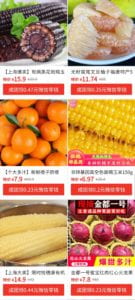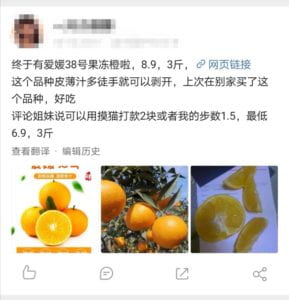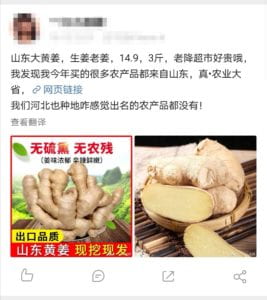Food system is the most invisible system in urban areas. We consume food every day, but we don’t really understand how food grows and gets to our cities. As is mentioned in Food, by Fabio Parasecoli, food doesn’t come to our table as what originally is, but as prepared, cooked, packaged. It is neither understandable nor worthy of concern for most people in urban areas due to the complexities of production and distribution in food system.
The development of technologies contributes to such invisibility in China. With the prevail establishment of delivery service, consumers no longer need to physically purchase food. We click, order, and receive. Along the process, we wouldn’t actually see the food we order in reality but a mock-up of it. This feeling is intensified in Taobao and JD.com. When I purchase food via Tmall Supermarket, directly run by Alibaba, I would expect high quality and clean and neat appearance. In fact, online shops only sell fresh agriculture products that have been selected first. Such selection process has made the whole food system even more invisible. Not every apple looks like the Apple’s icon. Apples have their own shapes and colors. But the standard of selection is about how to select apples that have the same or at least similar shapes. The uniformity takes away our sensitivity to learn about the food reality: for one, food, especially fresh agriculture products, ought to be different from one another; for another, we don’t really connect one type of food with an actual location. Our parents, the booming generation after World War II, still go to fruit shops and ask vendors where those fruits come from. Because they know, for example, what city or town produces the most wonderful grapefruits. But if asking Generation Z including me, they just don’t know. We are so accustomed to purchasing food non-interactively. We don’t communicate with those who are in the food system or understand the history of what they sell.
I, however, have noticed a new trend on purchasing food recently. Unlike online supermarkets run by big corporations, Pinduoduo is a platform where a lot of local vendors or peasants could access customers in cities. Pinduoduo is also well-known for affordable and low-price products. Customers could gain a sense on where fresh agriculture products originate by knowing where those ship. By contrast, customers receive products from the warehouse in the city they live in or nearby cites, if purchasing via Tmall Supermarket. Additionally, the products they receive often maintain the original appearance, different from one another and sometimes dusty.

Moreover, the diversity in vendors contributes to a new form of communication on food system. Customers would communicate through social media. They not only recommend food products and vendors but also talk about how the products get delivered and where to get the best quality. Surprisingly, they are young learners and observers in food system and motivate themselves to learn more about this invisible system in our daily life.


Leave a Reply